When we say someone has “eyes like a hawk,” we’re paying them quite the compliment, though few of us truly understand just how remarkable avian vision actually is. Birds possess some of the most sophisticated visual systems in the animal kingdom, with adaptations that would seem like superpowers if humans possessed them. From perceiving ultraviolet light to detecting magnetic fields, birds literally see our world in ways we can only imagine. This fascinating sensory world has evolved through millions of years to help birds navigate, hunt, mate, and survive in diverse environments. Let’s soar into the extraordinary realm of avian vision and discover what makes birds some of nature’s most visually gifted creatures.
Ultraviolet Vision – Seeing the Invisible
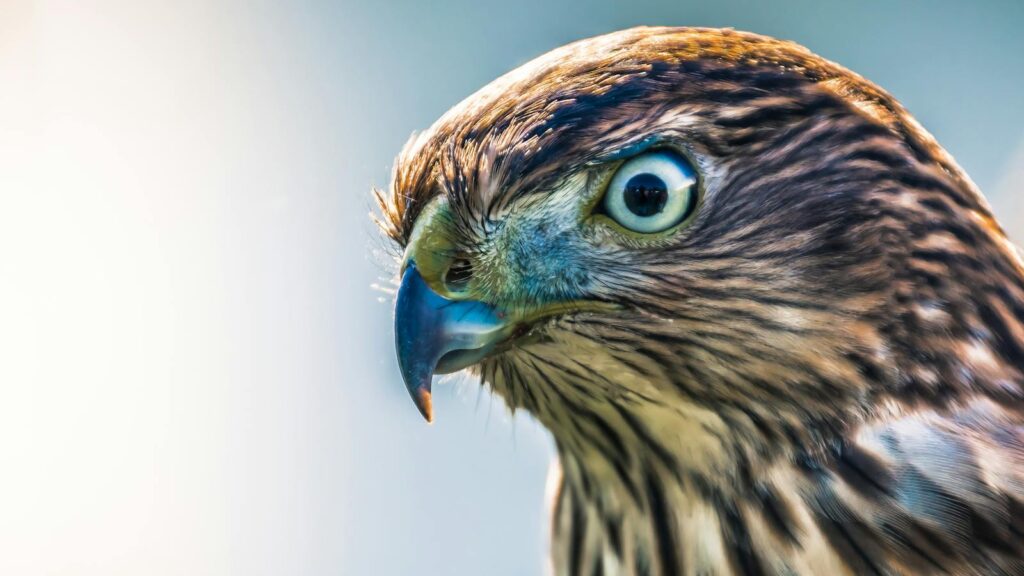
While humans perceive light in three primary colors (red, green, and blue), many birds see in four or even five color channels, including ultraviolet light that remains completely invisible to us. This tetrachromatic or pentachromatic vision allows birds to detect patterns on flowers that guide them to nectar or to spot urine trails of prey that reflect UV light. Some species, like kestrels, can track rodents by following their urine trails that glow in ultraviolet light, giving these hunters an incredible advantage. Perhaps most remarkably, many birds that appear identically colored to our eyes actually display dramatic differences in their plumage when viewed under UV light, creating complex patterns that play crucial roles in mate selection and recognition.
Raptor Visual Acuity – Nature’s Sharpshooters
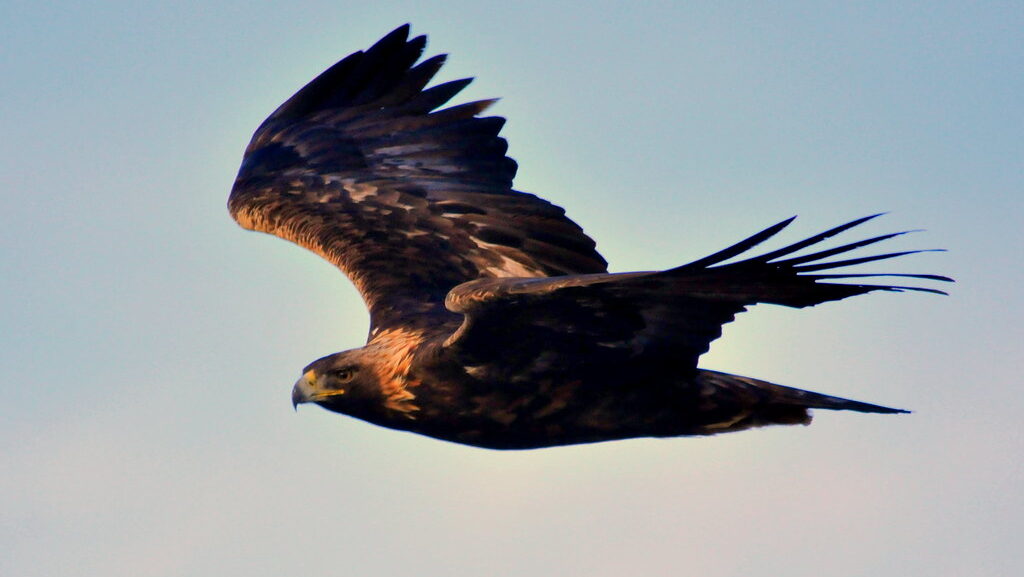
Hawks, eagles, and falcons possess visual acuity that far surpasses human capabilities, with some species able to spot prey from over a mile away. A golden eagle, for instance, can detect a rabbit from nearly two miles distant, distinguishing details approximately eight times more clearly than the human eye. This extraordinary vision comes partly from their higher density of photoreceptors – the cells in the retina that detect light. Eagles have approximately one million photoreceptors per square millimeter, while humans have only about 200,000. Additionally, birds of prey possess a specialized depression in their retina called the fovea, which contains an extraordinary concentration of cones that dramatically enhances their ability to perceive fine details, essentially functioning as a built-in telephoto lens.
Double Fovea – Two Areas of Heightened Vision
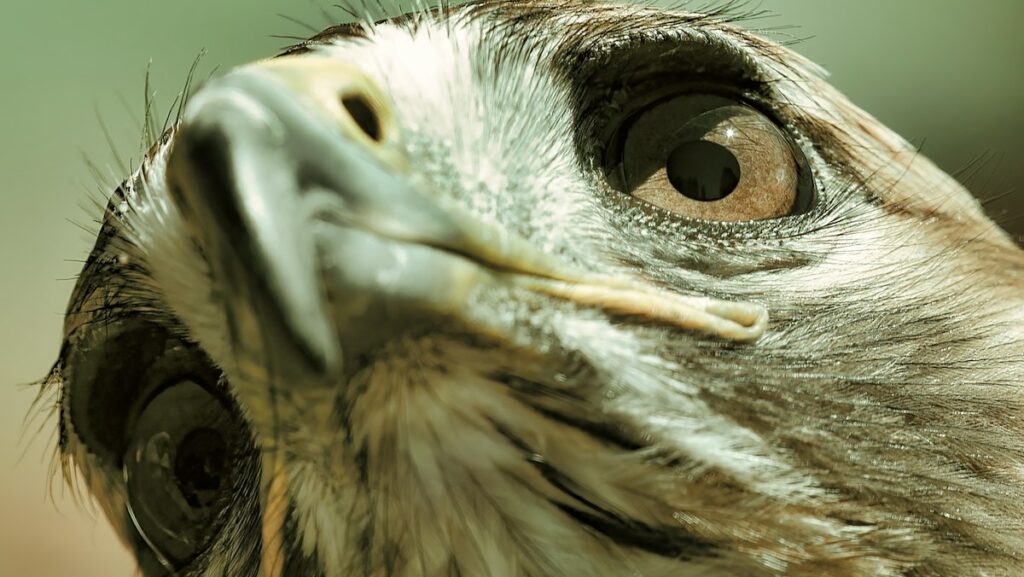
Unlike humans who have a single fovea (the area of sharpest vision in the retina), many birds, particularly predatory species, possess two foveae in each eye. This remarkable adaptation provides them with both frontal and lateral areas of high-definition vision simultaneously. The central fovea looks forward, providing detailed binocular vision and excellent depth perception when hunting or navigating through complex environments. The temporal fovea, positioned to view more laterally, allows birds to monitor their surroundings with extreme clarity without turning their heads. This dual-fovea system essentially gives birds the equivalent of having built-in binoculars alongside wide-angle peripheral vision, allowing them to track fast-moving prey while maintaining awareness of potential threats approaching from various directions.
Incredible Field of Vision – Eyes on the Sides
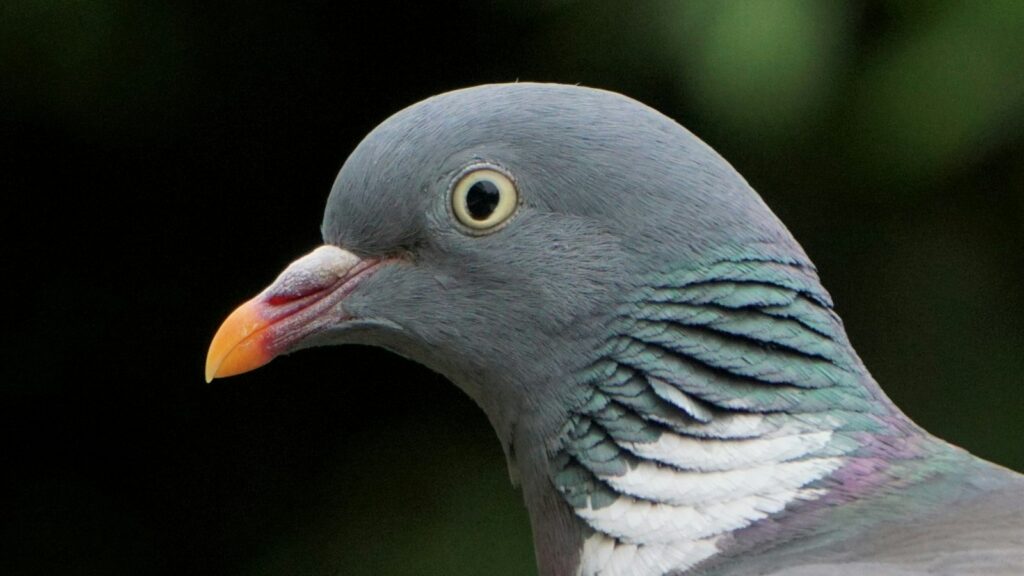
Many bird species possess eyes positioned on the sides of their heads, granting them a remarkably wide field of vision that far exceeds human capabilities. While humans typically have a visual field of about 180 degrees, birds like pigeons can see an astonishing 340 degrees around them, leaving just a small blind spot directly behind their heads. This panoramic vision serves as a critical survival adaptation, allowing prey species to detect approaching predators from nearly any direction. However, this wide-angle view comes with a trade-off – reduced binocular vision (where both eyes’ views overlap) and consequently less precise depth perception. Birds have evolved different eye positions based on their ecological roles, with predators having more forward-facing eyes for hunting accuracy and prey species featuring more lateral positioning for danger detection.
Rapid Visual Processing – Seeing in Slow Motion
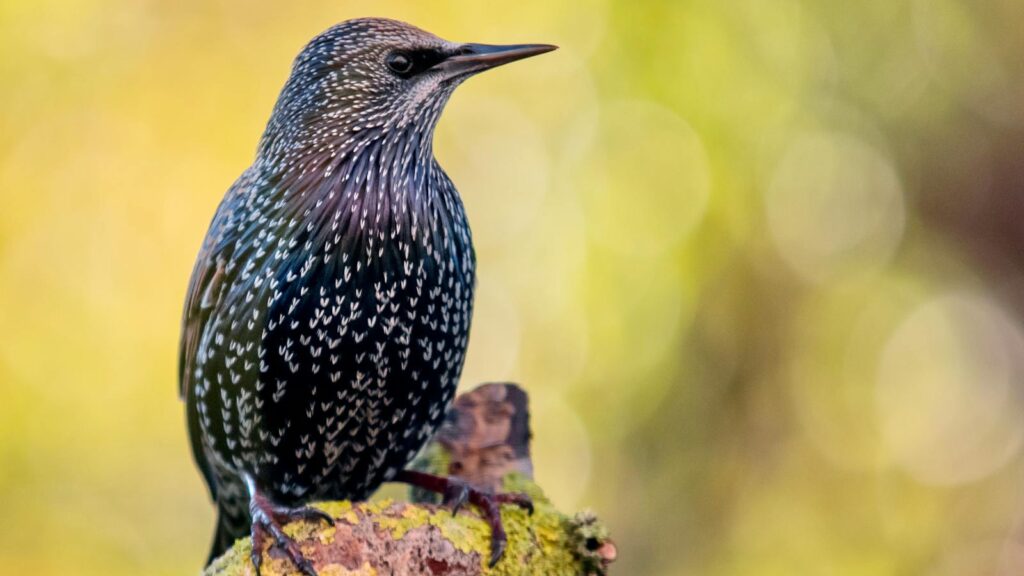
Birds process visual information significantly faster than humans do, essentially allowing them to perceive the world in what we might consider slow motion. This rapid visual processing helps birds navigate at high speeds, catch fast-moving prey, and avoid collisions while flying through complex environments like dense forests. Studies have shown that some birds can process visual information at more than twice the rate humans can, distinguishing events that occur in just milliseconds. For example, European starlings can perceive light flickering at up to 100 Hz (cycles per second), while humans generally cannot detect flickering above 60 Hz. This remarkable processing speed explains how hummingbirds can precisely navigate while beating their wings 50-80 times per second and how peregrine falcons can make split-second adjustments while diving at speeds exceeding 200 mph.
Magnetic Field Visualization – Built-in Compass

Perhaps one of the most extraordinary aspects of avian vision is the ability of some birds to literally “see” Earth’s magnetic field, a sense called magnetoreception. Research suggests certain species have specialized proteins called cryptochromes in their eyes that react to the planet’s magnetic field, creating visual patterns that overlay their normal vision. These patterns likely appear as light or dark areas that shift with the bird’s orientation relative to magnetic north, essentially functioning as a built-in compass. This remarkable ability helps explain how birds navigate with such precision during long migrations, sometimes traveling thousands of miles to the exact same locations year after year. European robins, for instance, have demonstrated the ability to sense magnetic fields even in complete darkness, though the visual component appears to enhance this sixth sense.
Oil Droplet Filters – Nature’s Color Enhancers
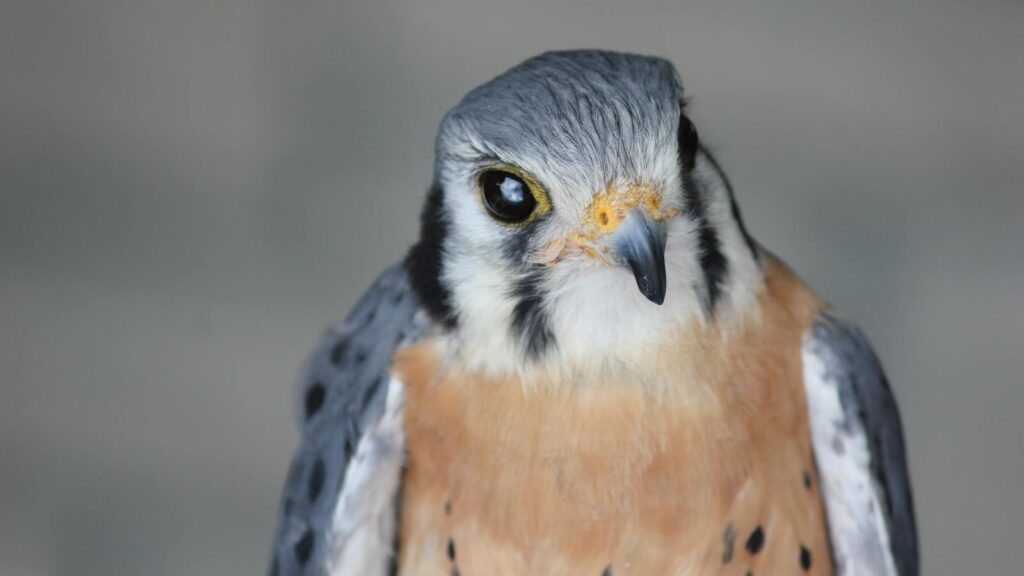
Bird eyes contain specialized oil droplets that act as color filters, enhancing their already impressive color vision in ways humans can barely comprehend. These tiny, colored droplets sit in front of the cone cells in birds’ retinas and function similarly to camera filters, selectively filtering wavelengths of light before they reach the photoreceptors. By filtering out overlapping wavelengths, these droplets enhance color contrast and allow birds to distinguish between subtle color variations that would appear identical to human observers. For example, birds can differentiate between dozens of shades of red that all look the same to us. This enhanced color discrimination helps birds identify ripe fruits, distinguish between similar-looking species, select the healthiest mates based on plumage quality, and spot camouflaged prey against complex backgrounds.
Polarized Light Detection – Seeing Water’s Secrets
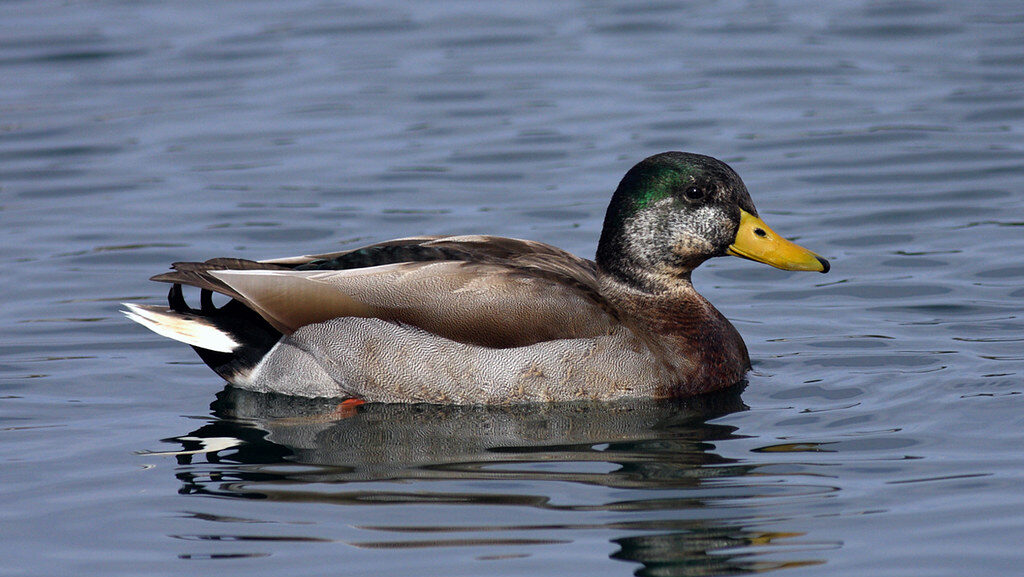
Many birds can perceive polarized light, which consists of light waves vibrating in a single plane rather than in multiple directions. This remarkable ability serves as a navigational aid, particularly for water birds and migratory species. Water strongly polarizes reflected light, making it appear distinctly different to birds with this visual capability than to human eyes. For waterbirds like ducks and geese, polarized vision helps them distinguish water surfaces from other reflective surfaces, allowing for more precise landings from great heights. Migratory birds likely use patterns of polarized light in the sky, especially at sunrise and sunset, as navigational cues during long-distance journeys. Some research suggests this ability may also help birds navigate on cloudy days when the sun isn’t directly visible.
Transparent Eyelids – Never Missing a Moment
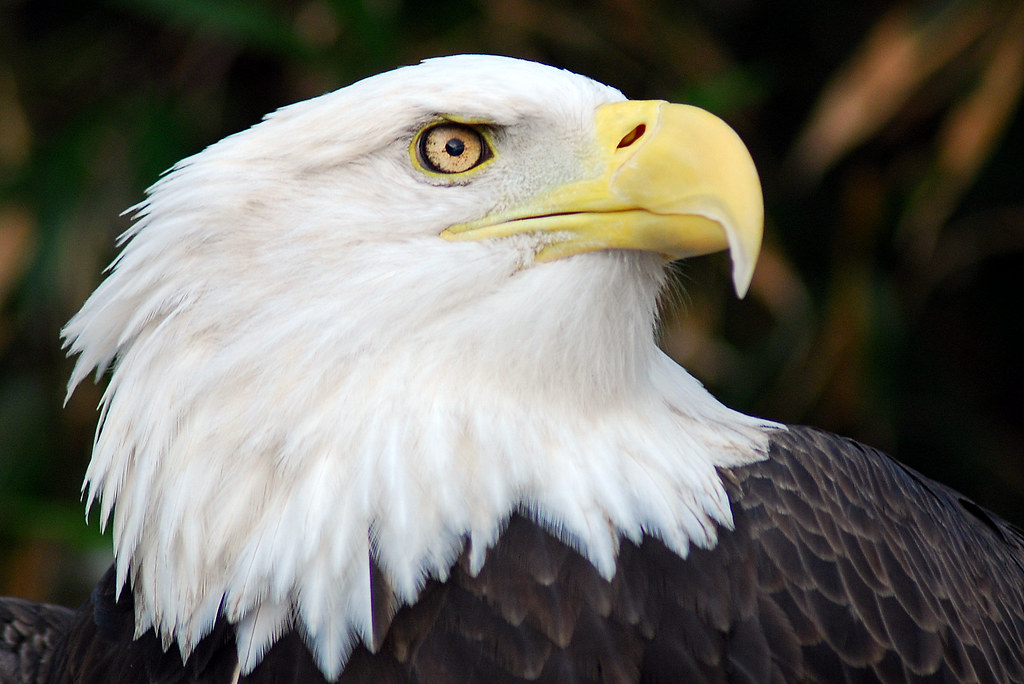
Many bird species possess a transparent third eyelid called the nictitating membrane that slides horizontally across the eye from the inner corner to the outer edge. This specialized membrane allows birds to keep their eyes moist and protected while maintaining vision, essentially functioning as a built-in pair of protective goggles. For diving birds like ospreys and kingfishers, this transparent eyelid acts as underwater eye protection, allowing them to see clearly while plunging into water at high speeds to catch fish. Birds of prey use their nictitating membranes while flying to protect their eyes from dust and debris while maintaining visual contact with fast-moving prey. The membrane also helps protect parent birds’ eyes while feeding hungry chicks with their often erratically moving beaks, preventing accidental eye injuries during the feeding frenzy.
Avian Eye Size – Proportionally Enormous
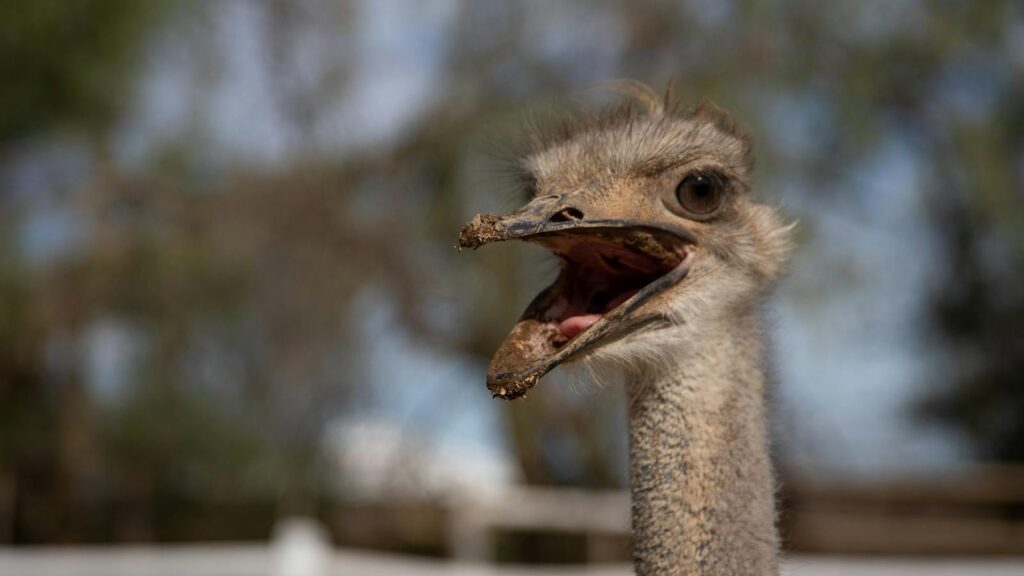
Bird eyes are proportionally enormous compared to their body size, often accounting for a significantly larger percentage of head mass than in other vertebrates. For instance, an ostrich’s eye is approximately 5 cm in diameter—larger than its brain and among the largest of all land animals. Even tiny songbirds devote a remarkable portion of their head to their visual organs, with eyes that would be the size of grapefruits if scaled to human proportions. These oversized eyes allow for larger retinas with more photoreceptors, contributing to birds’ exceptional visual acuity and color perception. The large size also enables more light to enter the eye, enhancing vision in low-light conditions for nocturnal species like owls, whose eyes can occupy up to 70% of their skull space, leaving almost no room for eye movement and necessitating their characteristic head rotation ability.
Vision Adaptations for Different Lifestyles
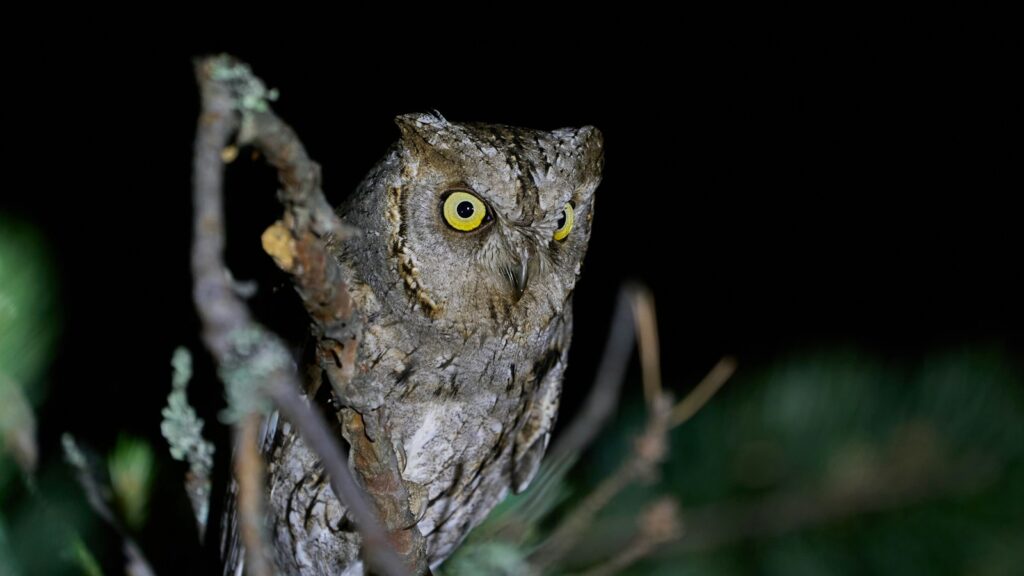
Birds’ visual systems show remarkable specialization based on their ecological niches and survival needs. Nocturnal birds like owls have rod-dominated retinas with fewer cone cells, sacrificing color vision for exceptional light sensitivity that allows them to hunt in near-darkness. Conversely, diurnal raptors and fruit-eating birds possess cone-rich retinas that prioritize color discrimination and sharp detail perception. Waterbirds like cormorants have specialized corneas and lenses that change shape underwater, allowing them to accommodate the different refractive properties of water versus air. Perhaps most impressively, some birds can rapidly switch visual modes—kestrels hunting voles can alternate between using their UV sensitivity to track urine trails and their sharp central vision to pinpoint the exact location of prey, demonstrating how avian vision can dynamically adapt to changing hunting conditions.
Conclusion
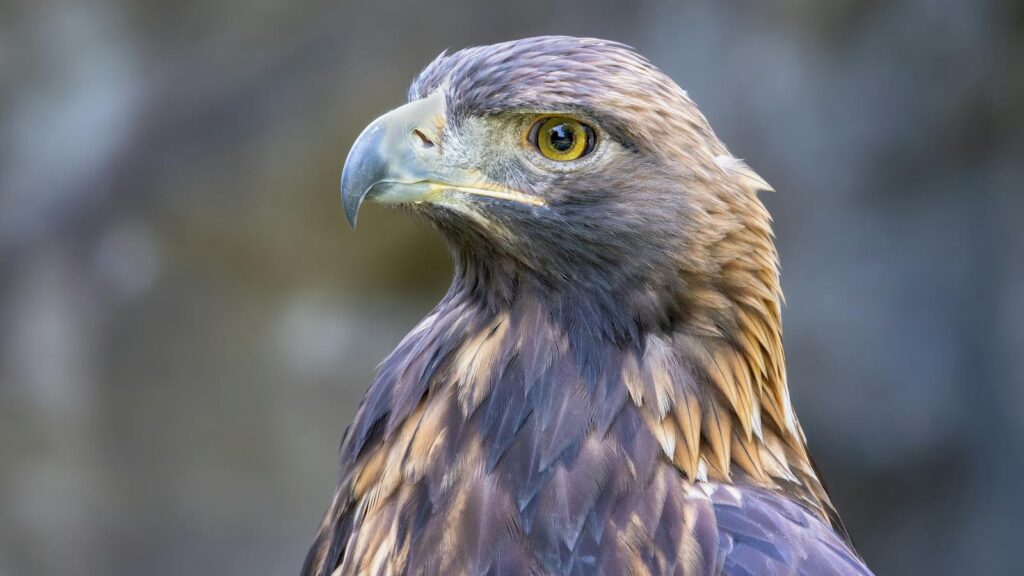
Bird vision represents one of nature’s most remarkable sensory adaptations, with capabilities that extend far beyond what humans can perceive. From seeing ultraviolet patterns to detecting Earth’s magnetic fields, birds navigate a visual world rich with information invisible to us. These extraordinary adaptations have evolved through millions of years to match each species’ ecological niche and survival needs. When we observe a hawk scanning for prey, a hummingbird precisely navigating to a flower, or migratory birds finding their way across continents, we’re witnessing the power of these specialized visual systems in action. While we may never truly experience the world as birds do, understanding their remarkable vision gives us a deeper appreciation for the complexity and diversity of perception in the animal kingdom.
